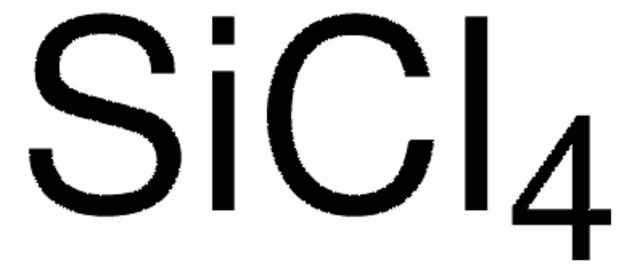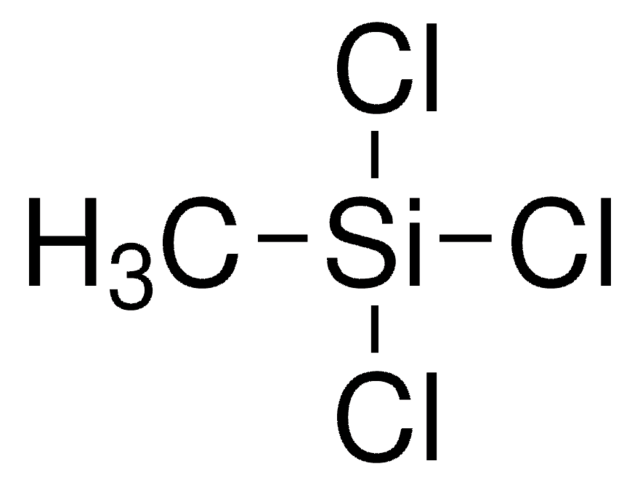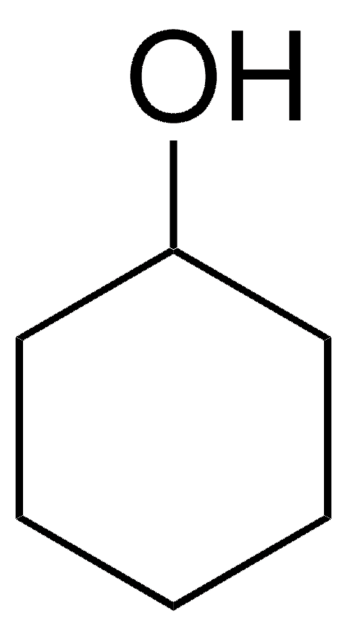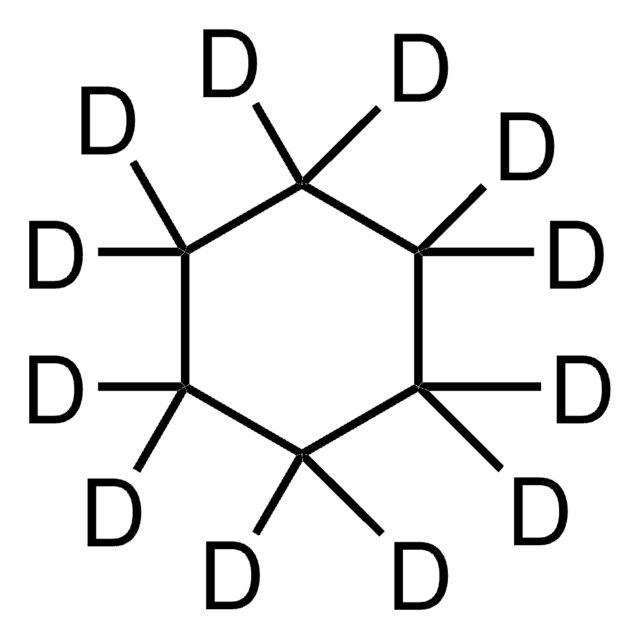215120
Silicon tetrachloride
99%
Synonym(s):
STC, Tetrachlorosilane
About This Item
Recommended Products
vapor density
5.86 (vs air)
Quality Level
vapor pressure
420 mmHg ( 37.7 °C)
Assay
99%
form
liquid
reaction suitability
core: silicon
bp
57.6 °C (lit.)
mp
−70 °C (lit.)
density
1.483 g/mL at 25 °C (lit.)
SMILES string
Cl[Si](Cl)(Cl)Cl
InChI
1S/Cl4Si/c1-5(2,3)4
InChI key
FDNAPBUWERUEDA-UHFFFAOYSA-N
Looking for similar products? Visit Product Comparison Guide
Related Categories
General description
Application
- in the preparation of high purity silicon, high purity silicon derived from silicon tetrachloride may find major applications in the semiconductors industry and in photovoltaic cells.
- to dealuminate zeolite, mordenite.
- as a coupling agent for the synthesis of amine from carboxylic acid and an amide.
- in the synthesis of nanosilica.
Packaging
Signal Word
Danger
Hazard Statements
Precautionary Statements
Hazard Classifications
Acute Tox. 3 Inhalation - Acute Tox. 3 Oral - Eye Dam. 1 - Skin Corr. 1A - STOT SE 3
Target Organs
Respiratory system
Supplementary Hazards
Storage Class Code
6.1D - Non-combustible, acute toxic Cat.3 / toxic hazardous materials or hazardous materials causing chronic effects
WGK
WGK 1
Flash Point(F)
Not applicable
Flash Point(C)
Not applicable
Personal Protective Equipment
Certificates of Analysis (COA)
Search for Certificates of Analysis (COA) by entering the products Lot/Batch Number. Lot and Batch Numbers can be found on a product’s label following the words ‘Lot’ or ‘Batch’.
Already Own This Product?
Find documentation for the products that you have recently purchased in the Document Library.
Articles
atomic layer deposition (ALD), microelectronics, Mo:Al2O3 films, nanocomposite coating, photovoltaics, semiconductor devices, W:Al2O3 films, composite films, layer-by-layer
Spin-based electronic (spintronic) devices offer significant improvement to the limits of conventional charge-based memory and logic devices which suffer from high power usage, leakage current, performance saturation, and device complexity.
Hybrid organic-inorganic sol-gel materials containing silica were first called “ORMOSILs” in 1984.
The properties of many devices are limited by the intrinsic properties of the materials that compose them.
Our team of scientists has experience in all areas of research including Life Science, Material Science, Chemical Synthesis, Chromatography, Analytical and many others.
Contact Technical Service






